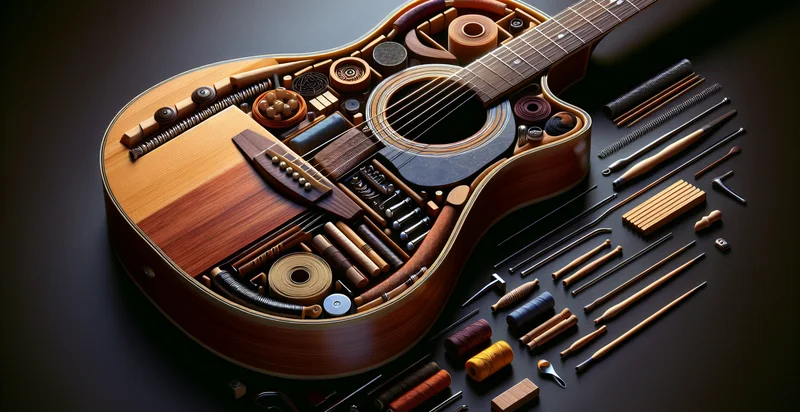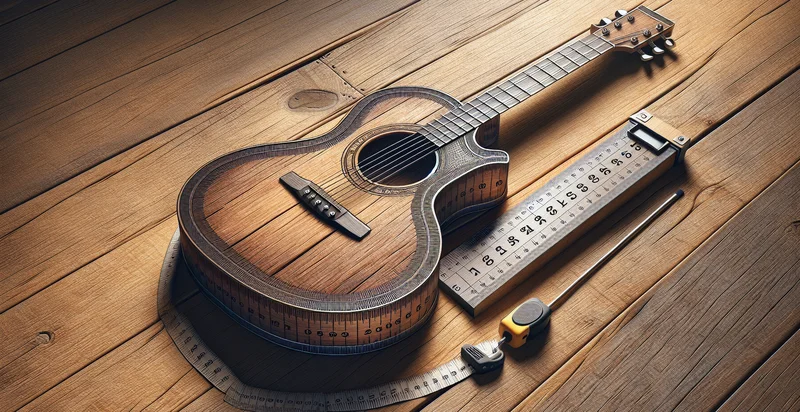Identify what material a guitar is made from
using AI
Below is a free classifier to identify what material a guitar is made from. Just upload your image, and our AI will predict what material a guitar is made from - in just seconds.

Contact us for API access
Or, use Nyckel to build highly-accurate custom classifiers in just minutes. No PhD required.
Get started
import nyckel
credentials = nyckel.Credentials("YOUR_CLIENT_ID", "YOUR_CLIENT_SECRET")
nyckel.invoke("what-material-a-guitar-is-made-from", "your_image_url", credentials)
fetch('https://www.nyckel.com/v1/functions/what-material-a-guitar-is-made-from/invoke', {
method: 'POST',
headers: {
'Authorization': 'Bearer ' + 'YOUR_BEARER_TOKEN',
'Content-Type': 'application/json',
},
body: JSON.stringify(
{"data": "your_image_url"}
)
})
.then(response => response.json())
.then(data => console.log(data));
curl -X POST \
-H "Content-Type: application/json" \
-H "Authorization: Bearer YOUR_BEARER_TOKEN" \
-d '{"data": "your_image_url"}' \
https://www.nyckel.com/v1/functions/what-material-a-guitar-is-made-from/invoke
How this classifier works
To start, upload your image. Our AI tool will then predict what material a guitar is made from.
This pretrained image model uses a Nyckel-created dataset and has 17 labels, including Acrylic, Aluminum, Bamboo, Brass, Carbon Fiber, Cedar, Chestnut, Fiberglass, Mahogany and Maple.
We'll also show a confidence score (the higher the number, the more confident the AI model is around what material a guitar is made from).
Whether you're just curious or building what material a guitar is made from detection into your application, we hope our classifier proves helpful.
Related Classifiers
Need to identify what material a guitar is made from at scale?
Get API or Zapier access to this classifier for free. It's perfect for:
- Quality Control in Manufacturing: Guitar manufacturers can integrate this image classification function into their production lines to ensure that materials used in building guitars meet quality standards. By identifying the specific wood or composite material, manufacturers can reduce defects and inconsistencies in their products.
- Guitar Valuation Services: Appraisers and online marketplaces can utilize the image recognition capability to assess and accurately value guitars based on the materials used. This improves transparency and trust in the buying/selling process, ensuring that potential buyers have detailed information regarding the materials.
- Online Music Retailers: E-commerce platforms can implement the function to enhance their product descriptions by automatically classifying the materials of the guitars listed for sale. This can help in attracting more customers who are interested in specific materials, thereby improving sales.
- Guitar Repair and Customization Services: Repair shops can leverage this technology to identify the materials of guitars brought in for service. Knowing the material helps technicians to select the appropriate repair methods and materials, leading to better results and customer satisfaction.
- Educational Tools for Musicians: Educational platforms for aspiring guitarists can incorporate this feature into their curriculum to teach about how different materials affect sound quality and playability. This adds an informative layer to their programs, fostering a deeper understanding of guitar construction.
- Sustainability Tracking: Companies focused on sustainability can utilize the image classification function to track and verify the origin of materials used in guitar manufacturing. This aids in promoting eco-friendly practices and ensuring compliance with regulations regarding sustainable sourcing.
- Insurance Claims Processing: Insurance companies that handle claims for musical instruments can employ this classification system to verify the materials of the insured guitars during claims assessments. This leads to more accurate processing of claims and validation of the instrument's value to avoid fraud.


